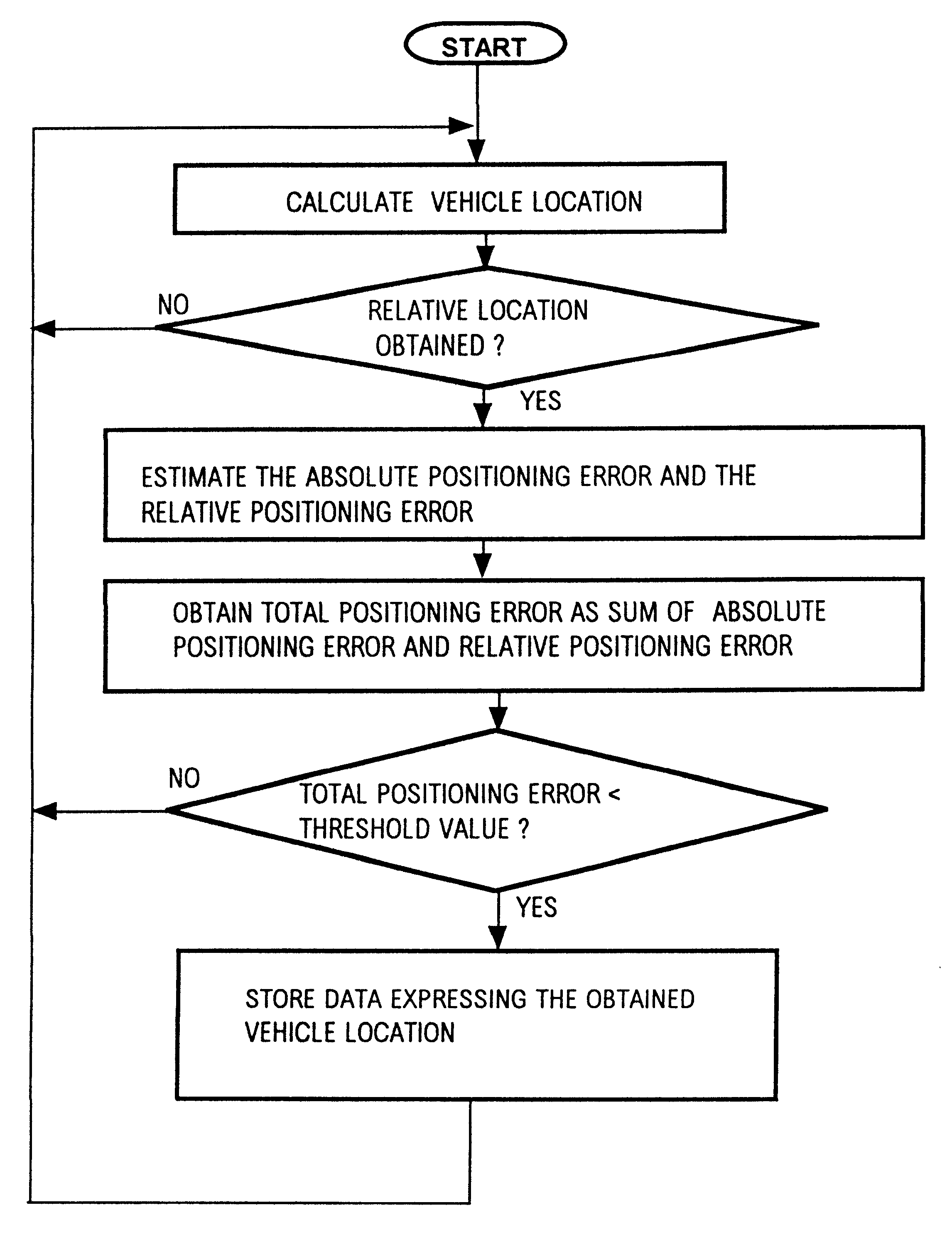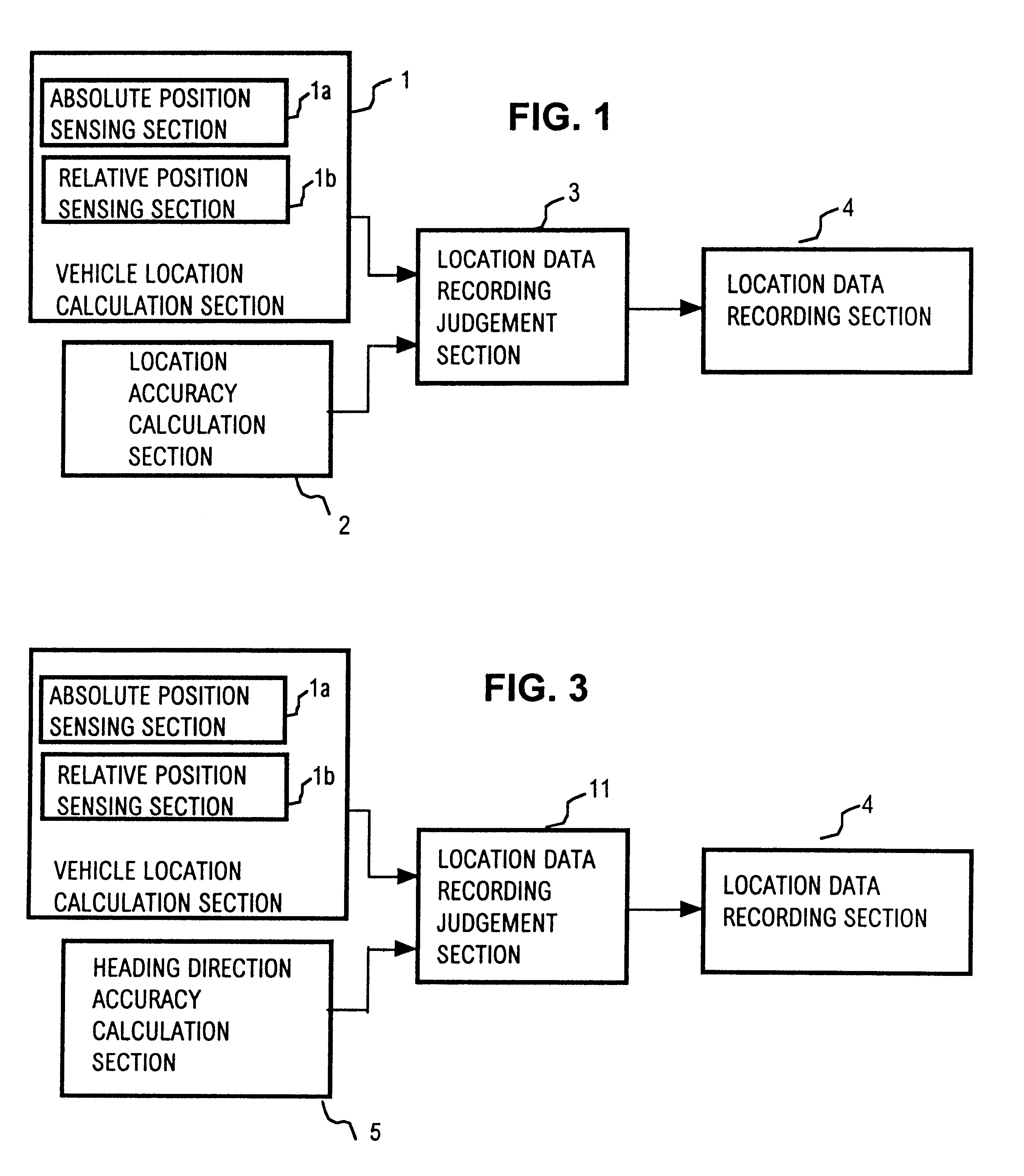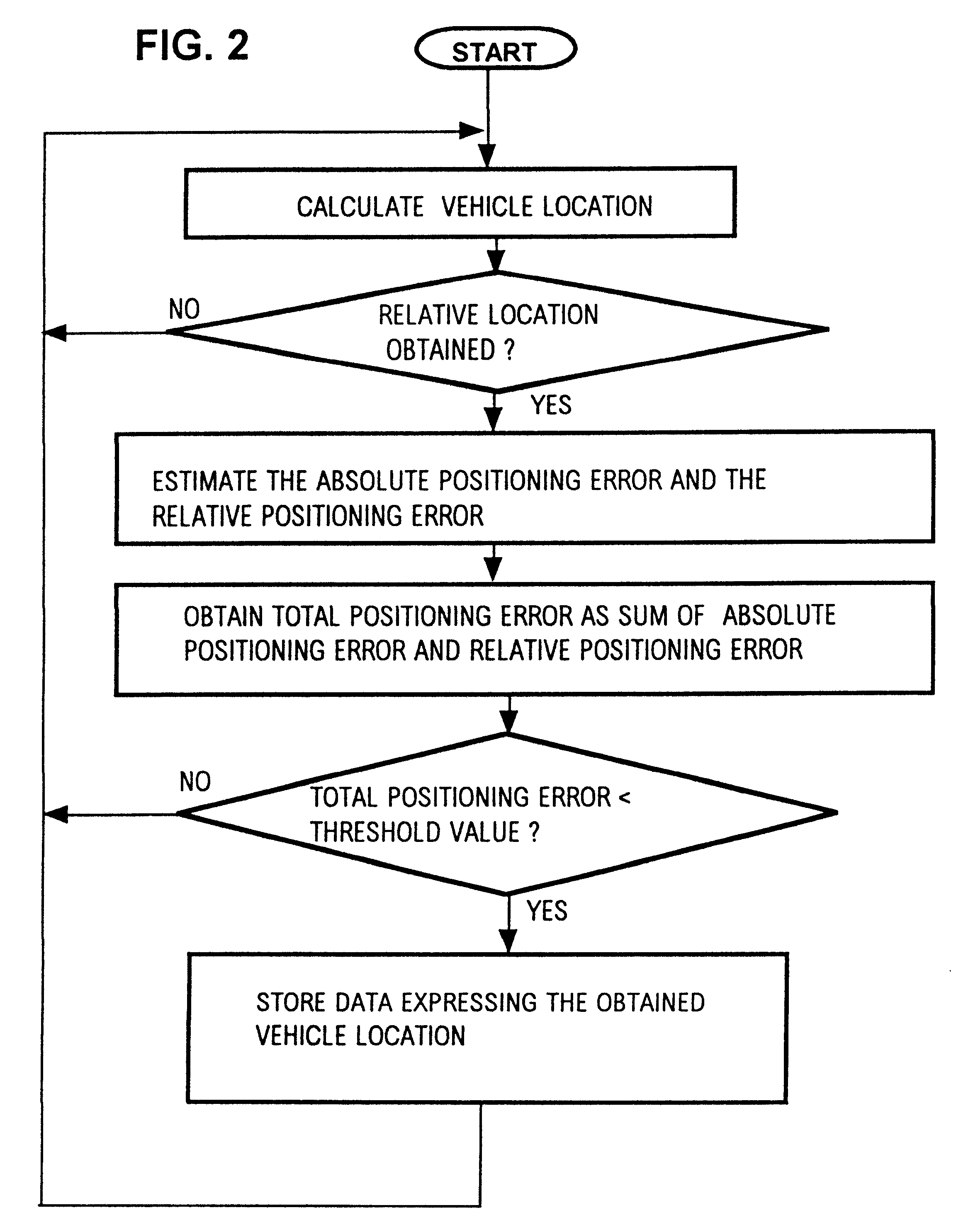Method and apparatus for applying decimation processing to vehicle position data based upon data accuracy estimation
a vehicle position and data accuracy technology, applied in the field of mobile body navigation apparatuses, can solve the problems of insufficient precision of accident site position, excessive time required to notify the necessary information to an emergency vehicle dispatch center, and substantial amount of time required for transmitting the necessary data
- Summary
- Abstract
- Description
- Claims
- Application Information
AI Technical Summary
Benefits of technology
Problems solved by technology
Method used
Image
Examples
second embodiment
A second embodiment will be described referring to the general system block diagram of FIG. 3 and the corresponding basic flow diagram of FIG. 4. This embodiment essentially differs from the preceding embodiment in that a navigation satellite number calculation section 6 is utilized in place of the position accuracy calculation section 2 of the first embodiment, while the respective functions of the vehicle position calculation section 1, position data recording judgement section 11 and position data recording section 4 substantially correspond to those of vehicle position calculation section 1, position data recording judgement section 3 and position data recording section 4 of the first embodiment. With this embodiment, the aforementioned absolute position sensing section of the vehicle position calculation section 1 derives, in conjunction with each absolute position, a corresponding absolute heading direction of the vehicle. Similarly, the aforementioned relative position sensin...
third embodiment
A third embodiment will be described referring to the general system block diagram of FIG. 5 and the corresponding basic flow diagram of FIG. 6. This embodiment essentially differs from the first embodiment in that a navigation satellite number calculation section 6 is utilized in place of the position accuracy calculation section 2 of the first embodiment, while the respective functions of the vehicle position calculation section 1, position data recording judgement section 12 and position data recording section 4 substantially correspond to those of the vehicle position calculation section 1, position data recording judgement section 3 and position data recording section 4 of the first embodiment.
With this embodiment, each time that the current position of the vehicle is newly calculated by the vehicle position calculation section 1, with the resultant position data being transferred to the position data recording judgement section 12, the navigation satellite number calculation s...
fourth embodiment
A fourth embodiment will be described referring to the general system block diagram of FIG. 7 and the corresponding basic flow diagram of FIG. 8. This embodiment essentially differs from the first embodiment in that a calculation status detection section 7 is utilized in place of the position accuracy calculation section 2 of the first embodiment, while the respective functions and operation of the vehicle position calculation section 1, position data recording judgement section 13 and position data recording section 4 substantially correspond to those of the vehicle position calculation section 1, position data recording judgement section 3 and position data recording section 4 of the first embodiment.
With this embodiment, each time that the position of the vehicle is newly calculated by the vehicle position calculation section 1, the position calculation status detection section 7 derives satellite acquisition status information which specifies whether or not GPS information was s...
PUM
 Login to View More
Login to View More Abstract
Description
Claims
Application Information
 Login to View More
Login to View More - R&D
- Intellectual Property
- Life Sciences
- Materials
- Tech Scout
- Unparalleled Data Quality
- Higher Quality Content
- 60% Fewer Hallucinations
Browse by: Latest US Patents, China's latest patents, Technical Efficacy Thesaurus, Application Domain, Technology Topic, Popular Technical Reports.
© 2025 PatSnap. All rights reserved.Legal|Privacy policy|Modern Slavery Act Transparency Statement|Sitemap|About US| Contact US: help@patsnap.com



